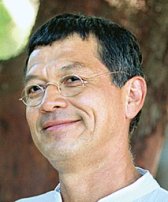For our CBEL project, our group’s main goal has been to increase awareness of Aboriginal medicinal and nutritional uses of traditional plants and to make the information regarding these plants more accessible. Many of these foods are less likely to be consumed by individuals living in urban centers simply because they may not know of the plants’ existence; we are hoping that our ethnobotanical database will spark the interest of many, both in the LFS community and beyond. Our latest activities consist of finishing and finalizing our database by adding to our plant profiles and making modifications to ensure that the layout of our entries is uniform throughout the database. Each group member has been assigned three plants to research and add to the database, which means that the database now contains 21 plants in total. For each one of these native plants we will include the common name(s), scientific name and family name, and a description of the anatomy and distinguishing features of the plant. We then discuss the uses of this plant, both medicinal and food related, in the aboriginal community and provide a few anecdotes or facts about it. Finally, we outline its geographical location and where it could be found in the Pacific Northwest and, if applicable, on campus. Our database is not yet available to LFS students but it will be soon! People will be able to access it through the LFS 350 flexible learning portal. We recommend the database be made available to all of UBC or the entire public, as this would increase the spread of knowledge.

Community partner Dr. Eduardo Jovel has big ideas for our database.
http://www.landfood.ubc.ca/directory/faculty/professors-and-instructors/eduardo-jovel
We believe that our ethnobotanical database is a good start for future LFS CBEL projects. We have discussed with Eduardo his plans for the IAH garden and the continuation of the database. He has confirmed that the IAH garden will be incorporated into LFS because the Institute of Aboriginal Health is being absorbed under a larger Aboriginal umbrella and will no longer be running the garden. This “renovated” garden will have a much greater emphasis on education, veering away from the function of food production that currently dominates; we believe a balance between the two would be ideal. The plan is for the database to include a guided tour of the new garden and have in-depth information about the plants and their uses. We were discussing the possibility of students being able to scan a QR barcode with their phone at each plant to receive information specific to that plant. Our database is a great start to Eduardo’s new project and for students in future projects to build upon by adding more plants or more information about existing plants, perhaps with a virtual tour.
One recommendation for future groups that might have a similar project is to get the Ethics Board approval for interviews before starting to work on the project. We believe that if we were able to conduct interviews, our database would be far more interesting. We could have included personal stories told by members of the Aboriginal communities and shared recipes and uses of native plants. We have simply collected information from different sources and compiled them in our database, because that was the only research method appropriate for our project. Adding qualitative research methods to our project would have given us the opportunity to provide our readers with new information and more relatable anecdotes and stories. Another recommendation for future groups is to take pictures of the plants they are planning on researching as early as possible. Unfortunately, when we were taking pictures most of the plants were no longer flowering or no longer had fruit because it was so late in the season; therefore many of the pictures did not demonstrate the distinguishing features the plants. Most of the photos used in our database were provided to us by the UBC Botanical Garden or found in the Wikimedia Commons, under creative commons copyrights. We believe that the database could be better if we took our own pictures of the native plants around the UBC campus. Some plants, roots mainly, are harvested in the spring before flowers — and sometimes even leaves — have formed, so being able to identify the plants at various stages would be helpful. Ideally, a picture of the plant during each season should be included; this way people could see how the appearance of the plant changes throughout the year. And finally, one of the most important recommendations is for students to get to know their community! Even though we could not interview people from our community, being able to meet them and learn more about them really helped us in our research. For example, attending community lunches, we were able to see how native plants could be incorporated into meals, which is what we ultimately want to impart through this database.
We are looking forward to sharing our final findings and discuss our CBEL project with the LFS 350 class this week. We hope that they will enjoy this project as much as we did and that we will get constructive feedback and recommendations on how we could improve it in the future.
